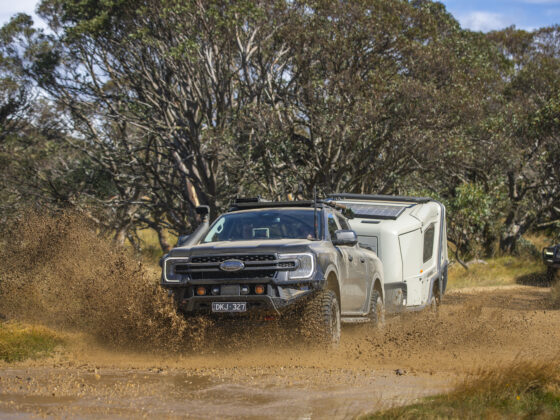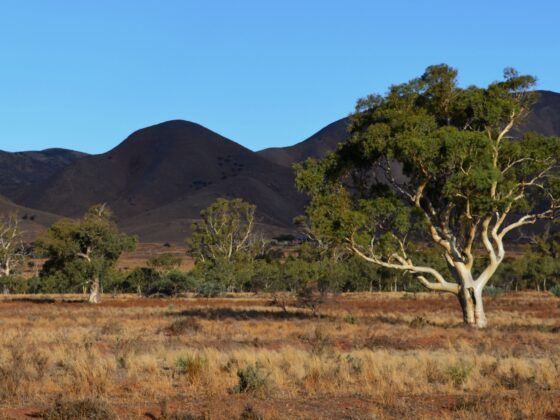To some, the very word Dingo is polarising. Whether referencing the Azaria Chamberlain case of the 80s or a hard-pressed farmer in lambing season looking for something to blame, Dingoes are at the pointy end of the stick for a lot of reasons.
Dingoes are Australia’s native apex predator, and have been for some 6,000 years. Hardly intimidating like a Grizzly Bear or fearless Lion, our cute and fluffy Dingoes hold a special place in the eco-system without getting the deserved respect of the larger predators overseas. Dingoes keep kangaroo numbers in check, and actively hunt introduced species like pigs, rabbits, cats and foxes, letting the smaller endangered native fauna survive.
Dingoes face a lot of threats-habitat loss, lethal control and interbreeding with domestic dogs all being the common threats. Pure dingoes are becoming scarce. This does not help preserve our natural environment at all, and we could see the extinction of another native animal if we aren’t more careful; much like how the Tasmanian Tiger was hunted to extinction.

Dingo Myths
There’s plenty of myths floating around about Dingoes, to address some:
- Dingoes can bark
- Dingoes come in all colours
- Dingoes are not just dogs.
Barking
As someone with a pair of pure Dingoes who sleep at the foot of my bed at night, I can say that a Dingo can bark. They won’t bark excessively like a Shitzu or Pomeranian. It’s more of a breathy chuff, given once or twice in warning…followed by silence as they slink out of sight. They more commonly howl, and what a glorious song it is!

Colours
Dingoes come in a variety of colours, the most common is the sandy ginger colour. They can be anywhere from pure white (including albino) to pitch black with everything in the middle, some even showing patchy colour variations. A dingo’s coat might be short haired if from the tropical regions or thick fur for alpine dwelling Dingoes. Curiously, Fraser Island Dingoes have a coat more in common with an Alpine Dingo than a Tropical Dingo. Dingoes are also naturally lean, as they only eat enough to survive. Many humans could learn from that ethic!
Dingo DNA
While somewhat resembling certain breeds of domestic dog, Dingoes share a common ancestor thousands of years ago but have since evolved to suit Australian conditions. Their DNA is unique, with approximately 2% of mitochondrial DNA matching an ancient Asian domestic dog breed, and has more in common with the Asian Grey Wolf than a ‘normal’ dog. A Dingo’s behaviour is vastly different to a domestic dog, and their role in the Australian ecosystem is justifiably critical.
Where will you see Dingoes
Most 4WDers come across Dingoes either on Fraser Island or in the desert regions, though they are endemic everywhere in Australia except Tasmania. Dingoes are naturally wary of humans, preferring to keep in the shadows until you’re in bed. Then they’ll poke around your camp looking for tasty leftovers. In North America, campers are taught to keep all food in their car or hoist it well above ground in a ‘bear safe’ to keep the local predators from having a lazy snack. This is the sort of care we should take with Dingoes.

This is where we come afoul. Dingoes are born hunters, and don’t need feeding. They are at their healthiest when there is no interaction with humans at all. The worst thing you can do is leave dirty plates or a rubbish bag out overnight. Don’t throw your fish scraps to them on Fraser Island. If they approach your camp, shoo them away with a wave. Don’t chase; that becomes a game.
How to prevent a bad Dingo encounter:
- If Dingoes are around, don’t leave your camp. Stay out of their territory
- Don’t chase. There’s rarely just one lone Dingo
- Don’t feed them.
- Don’t encourage them to come for a pat. They are wild animals
- If children (or small teenagers/tiny adults) are present, always have a full sized adult accompany the small person if they leave the immediate campsite.
If surprised by a Dingo, you should stand tall, make noise and fold your arms across your chest. Walk backwards or sideways away slowly and carefully. The QPWS have an info page on Fraser Island Dingoes here.
Unfortunately, when a Dingo is allowed to become lazy and feed on human food or garbage, it loses its fear around humans. This puts the Dingo’s life at risk, by endangering you. Remember: Any Dingo that interacts with humans on Fraser Island faces death.
If you are a little squeamish, perhaps don’t watch the following video. Otherwise, enjoy watching Australia’s apex predator taking down a feral, introduced boar piglet.
















